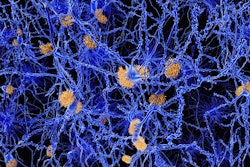Monday, November 26 | 3:40 p.m.-3:50 p.m. | SSE21-05 | Room E353B
Clinicians can add a ferumoxytol contrast agent to MRI for simultaneous scans with FDG-PET in pediatric patients, with no worry about the contrast agent's effect on standardized uptakes values.The study addresses concerns from previous research suggesting that ferumoxytol (Feraheme, Amag Pharmaceuticals) can accumulate in organs and tissue and adversely affect MR-based attenuation corrections of PET data. Accurate measurement of standardized uptakes values (SUVs) of tumors and normal organs with PET imaging is crucial in assessing how well pediatric cancer patients are responding to treatment.
Dr. Anne Muehe from Stanford University will present the prospective study, which included 16 children with malignant tumors who underwent FDG-PET/MRI before chemotherapy with or without intravenous injection of ferumoxytol. Patients who received ferumoxytol were matched by age and gender with patients who had unenhanced MRI scans. MR attenuation correction was obtained by a four-point Dixon liver acquisition with volume acquisition (LAVA) sequence accounting for fat, air, water, and soft tissue.
In calculating the mean SUVs, Muehe and colleagues found no significant difference in any organ or tissue between the pediatric patients who did and did not receive ferumoxytol. They performed the comparisons on the brain, parotid gland, larynx, mediastinal blood pool, thymus, myocardium, liver, spleen, bone marrow, kidney, and muscle.
The findings are good news for clinicians who might choose PET/MRI as an option for pediatric patients, given that the hybrid modality offers significantly less radiation than PET/CT and provides enhanced soft-tissue resolution.




















